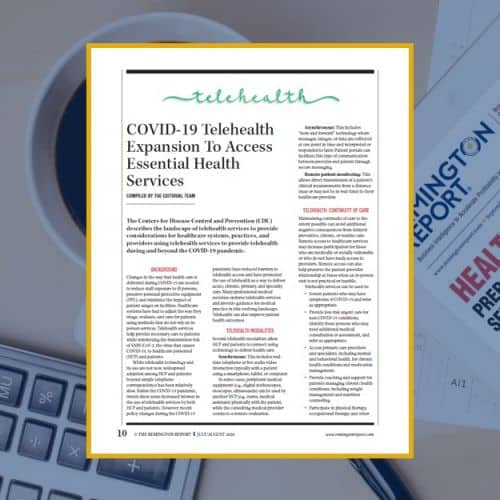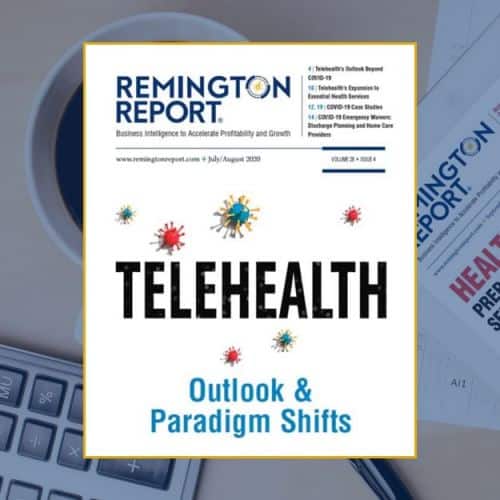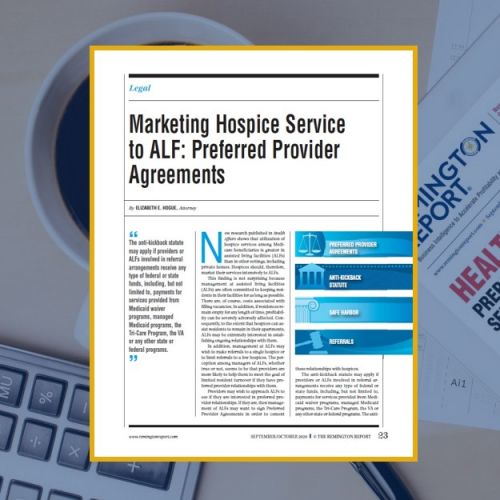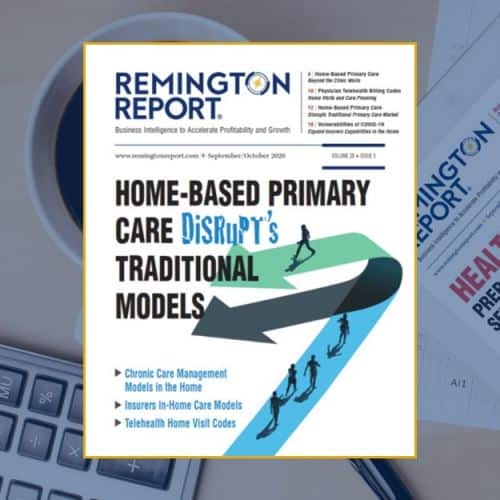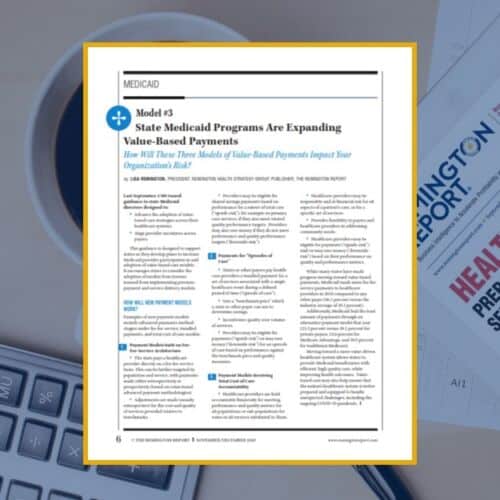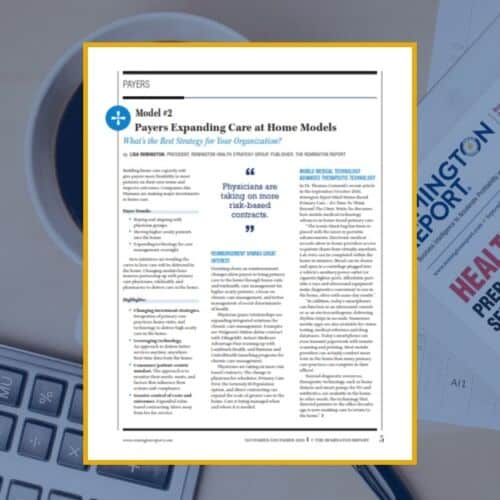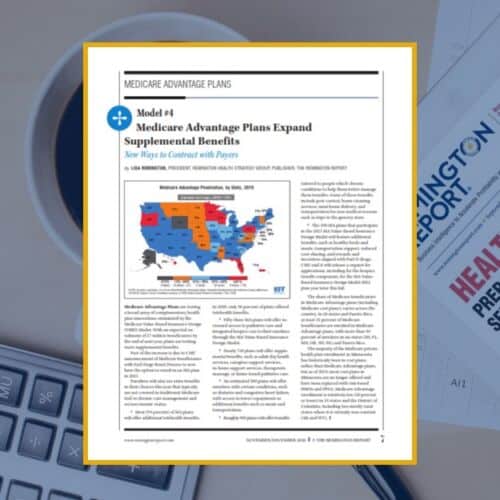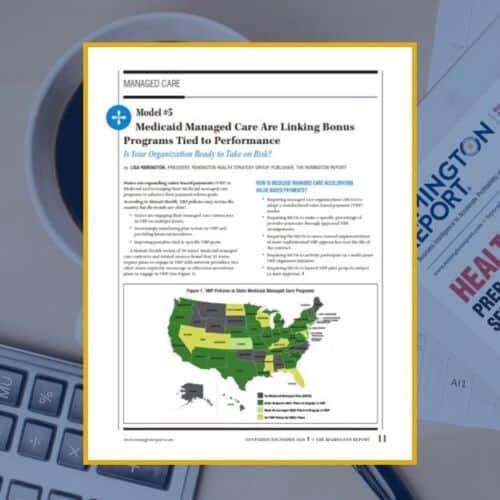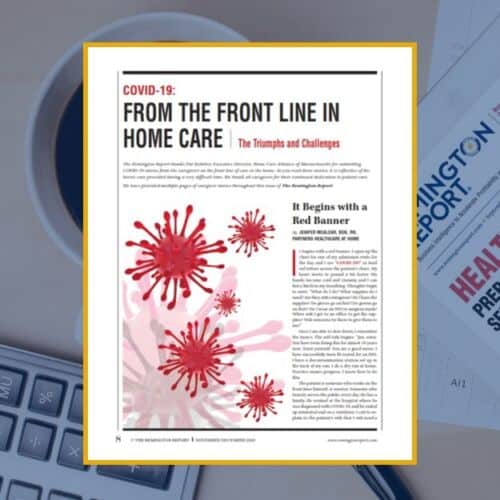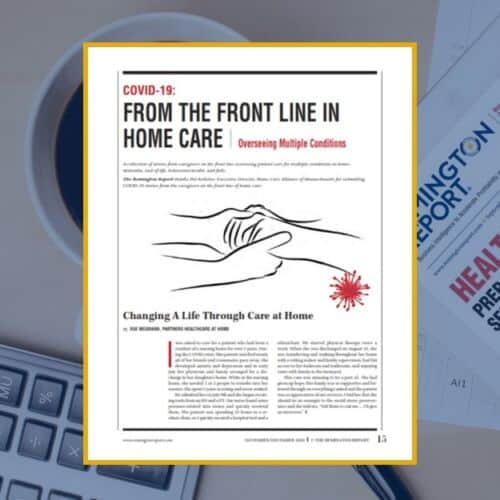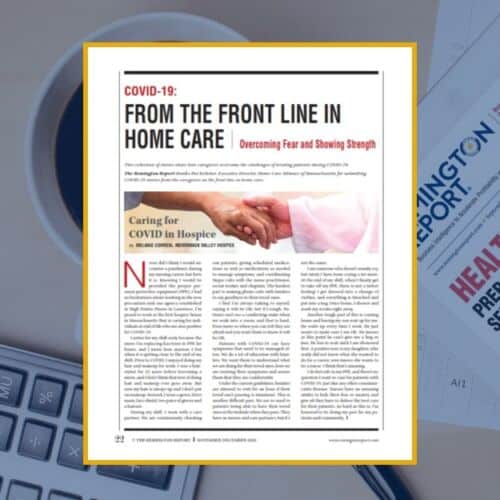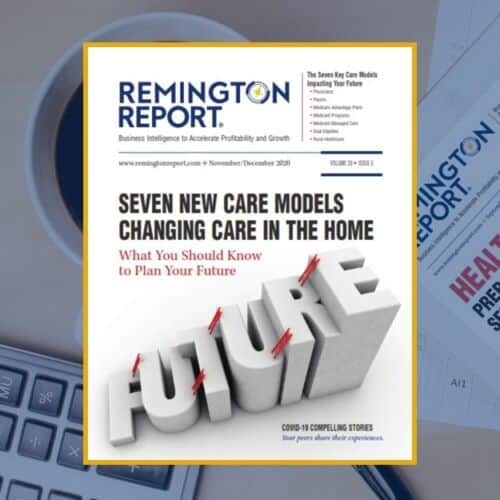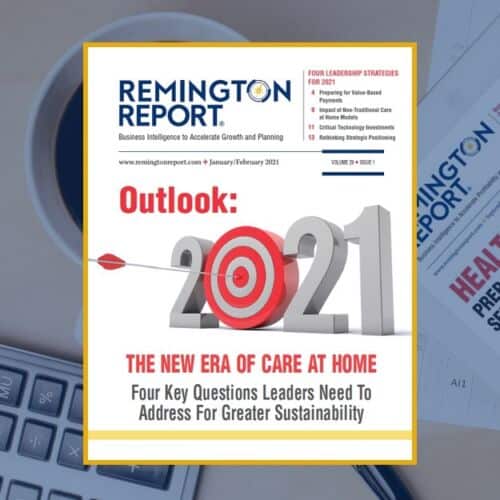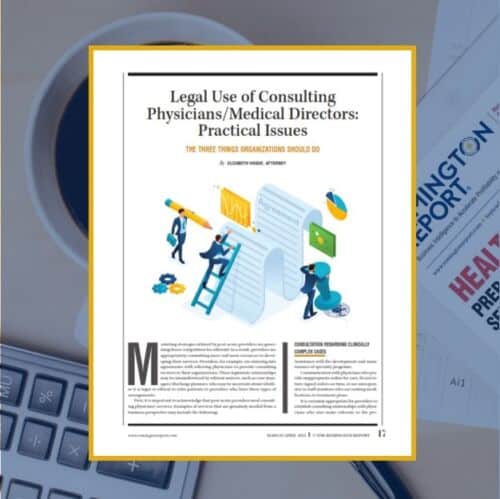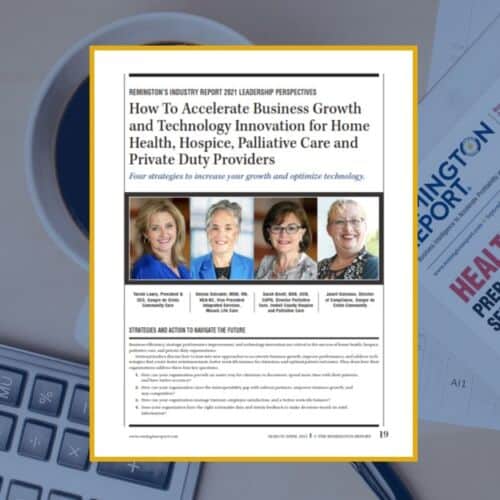-
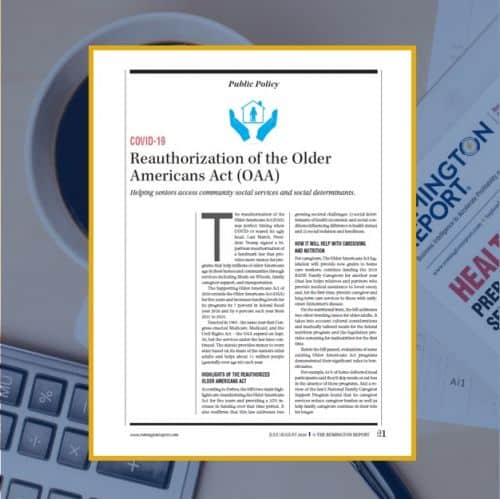 The reauthorization of the Older Americans Act (OAA) was perfect timing when COVID-19 reared its ugly head. Last March, President Trump signed a bipartisan reauthorization of a landmark law that provides more money for programs that help millions of older Americans age in their homes and communities through services including Meals on Wheels, family caregiver support, and transportation. This article is free to 1-Year Classic and 2-Year Premium subscribers.
The reauthorization of the Older Americans Act (OAA) was perfect timing when COVID-19 reared its ugly head. Last March, President Trump signed a bipartisan reauthorization of a landmark law that provides more money for programs that help millions of older Americans age in their homes and communities through services including Meals on Wheels, family caregiver support, and transportation. This article is free to 1-Year Classic and 2-Year Premium subscribers. -
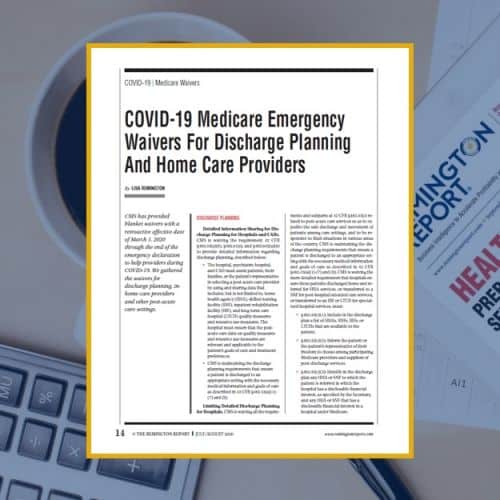 CMS has provided blanket waivers with a retroactive effective date of March 1, 2020 through the end of the emergency declaration to help providers during COVID-19. We gathered the waivers for discharge planning, in-home care providers, and other post-acute care settings. This article is free to 1-Year Classic and 2-Year Premium subscribers.
CMS has provided blanket waivers with a retroactive effective date of March 1, 2020 through the end of the emergency declaration to help providers during COVID-19. We gathered the waivers for discharge planning, in-home care providers, and other post-acute care settings. This article is free to 1-Year Classic and 2-Year Premium subscribers. -
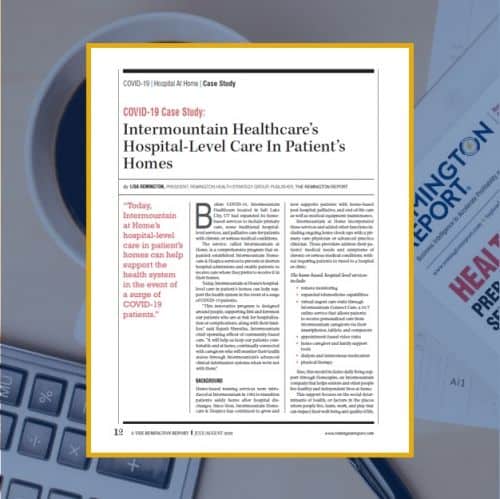 Intermountain at Home’s hospital-level care in patient’s homes supports their health system in the event of a surge of COVID-19 patients. Their models include home-based post-hospital care, palliative, and end-of-life care as well as medical equipment maintenance. This article is free to 1-Year Classic and 2-Year Premium subscribers.
Intermountain at Home’s hospital-level care in patient’s homes supports their health system in the event of a surge of COVID-19 patients. Their models include home-based post-hospital care, palliative, and end-of-life care as well as medical equipment maintenance. This article is free to 1-Year Classic and 2-Year Premium subscribers. -
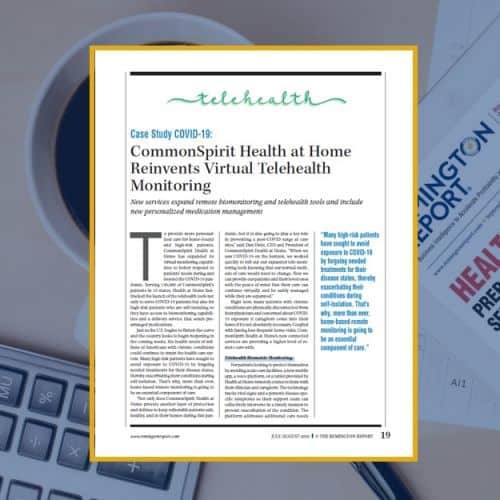 CommonSpirit Health at Home provides another layer of protection and defense to keep vulnerable patients safe, healthy, and in their homes during this pandemic. And, it positioned to play a key role in preventing a post-COVID surge at care sites. Learn how CommonSpirit at Home expanded its virtual monitoring capabilities to better respond to patients? needs during and beyond the COVID-19 pandemic. This article is free to 1-Year Classic and 2-Year Premium subscribers.
CommonSpirit Health at Home provides another layer of protection and defense to keep vulnerable patients safe, healthy, and in their homes during this pandemic. And, it positioned to play a key role in preventing a post-COVID surge at care sites. Learn how CommonSpirit at Home expanded its virtual monitoring capabilities to better respond to patients? needs during and beyond the COVID-19 pandemic. This article is free to 1-Year Classic and 2-Year Premium subscribers. -
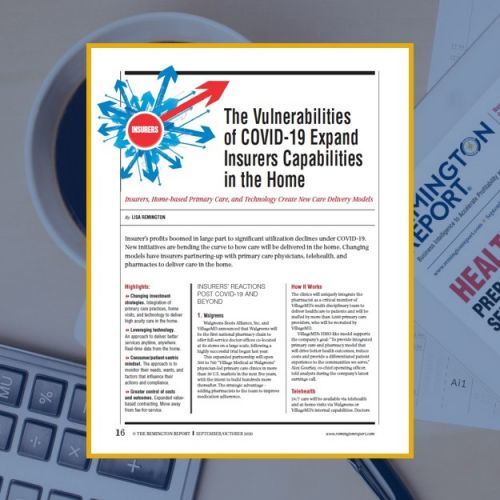 Insurers' strategies to provide greater services in the home are moving rapidly. Changing models have insurers partnering-up with primary care physicians, telehealth, and pharmacies to deliver care in the home. We provide insights to insurers' reactions post COVID-19 and beyond. This article is free to 1-Year Classic and 2-Year Premium subscribers.
Insurers' strategies to provide greater services in the home are moving rapidly. Changing models have insurers partnering-up with primary care physicians, telehealth, and pharmacies to deliver care in the home. We provide insights to insurers' reactions post COVID-19 and beyond. This article is free to 1-Year Classic and 2-Year Premium subscribers. -
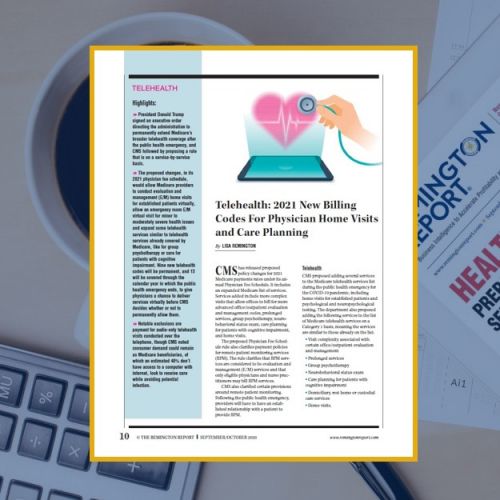 CMS has released proposed policy changes for 2021 Medicare payment rates under its annual Physician Fee Schedule. Telehealth codes allow physicians to bill for home visits and care planning. We dive into the codes and what they mean. This article is free to 1-Year Classic and 2-Year Premium subscribers.
CMS has released proposed policy changes for 2021 Medicare payment rates under its annual Physician Fee Schedule. Telehealth codes allow physicians to bill for home visits and care planning. We dive into the codes and what they mean. This article is free to 1-Year Classic and 2-Year Premium subscribers. -
 Payers are interested in talking about the data. In particular, they are interested in understanding how home care providers are able to reduce their penalties and increase their rewards in a value-based payment system. Learn how one organization is advancing conversations. This article is free to 1-Year Classic and 2-Year Premium subscribers.
Payers are interested in talking about the data. In particular, they are interested in understanding how home care providers are able to reduce their penalties and increase their rewards in a value-based payment system. Learn how one organization is advancing conversations. This article is free to 1-Year Classic and 2-Year Premium subscribers. -
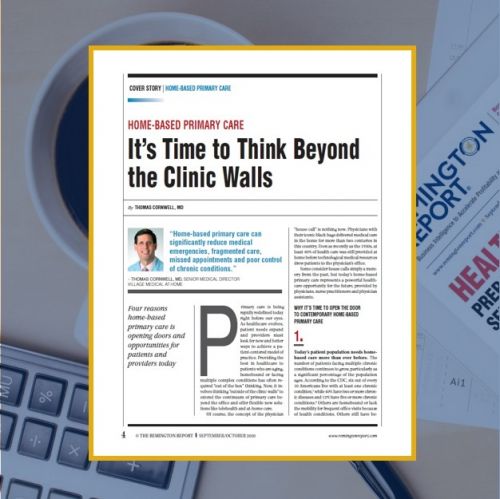 Primary care is being rapidly redefined today right before our eyes. As healthcare evolves, patient needs expand and providers must look for new and better ways to achieve a patient-centered model of practice. Read the four reasons home-based primary care is opening doors and opportunities for patients and providers today. This article is free to 1-Year Classic and 2-Year Premium subscribers.
Primary care is being rapidly redefined today right before our eyes. As healthcare evolves, patient needs expand and providers must look for new and better ways to achieve a patient-centered model of practice. Read the four reasons home-based primary care is opening doors and opportunities for patients and providers today. This article is free to 1-Year Classic and 2-Year Premium subscribers. -
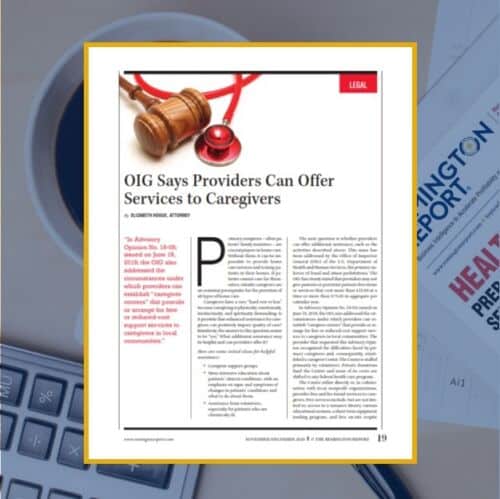 In Advisory Opinion No. 18-05; issued on June 18, 2018; the OIG addressed the circumstances under which providers can establish ?caregiver centers? that provide or arrange for free or reduced-cost support services to caregivers in local communities. This article is free to 1-Year Classic and 2-Year Premium subscribers.
In Advisory Opinion No. 18-05; issued on June 18, 2018; the OIG addressed the circumstances under which providers can establish ?caregiver centers? that provide or arrange for free or reduced-cost support services to caregivers in local communities. This article is free to 1-Year Classic and 2-Year Premium subscribers. -
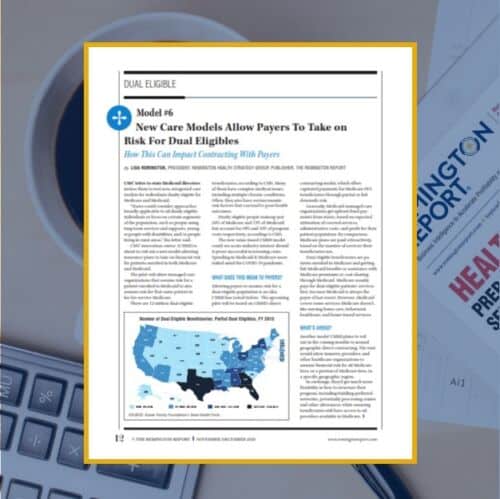 CMS' innovation center (CMMI) is about to roll out a new model allowing insurance plans to take on financial risk for patients enrolled in both Medicare and Medicaid. How will this affect payers? What other new models can you expect in the future? This article is free to 1-Year Classic and 2-Year Premium subscribers.
CMS' innovation center (CMMI) is about to roll out a new model allowing insurance plans to take on financial risk for patients enrolled in both Medicare and Medicaid. How will this affect payers? What other new models can you expect in the future? This article is free to 1-Year Classic and 2-Year Premium subscribers. -
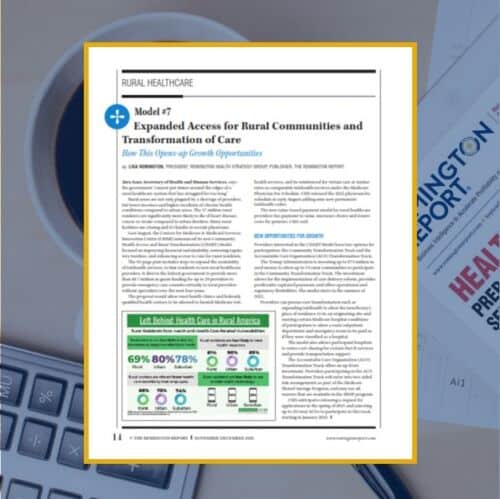 The Community Health Access and Rural Transformation (CHART) Model expands telehealth services, links residents to non-local healthcare providers, and provides more than $8.7 million in grant funding. What are the new opportunities for your organization? This article is free to 1-Year Classic and 2-Year Premium subscribers.
The Community Health Access and Rural Transformation (CHART) Model expands telehealth services, links residents to non-local healthcare providers, and provides more than $8.7 million in grant funding. What are the new opportunities for your organization? This article is free to 1-Year Classic and 2-Year Premium subscribers. -
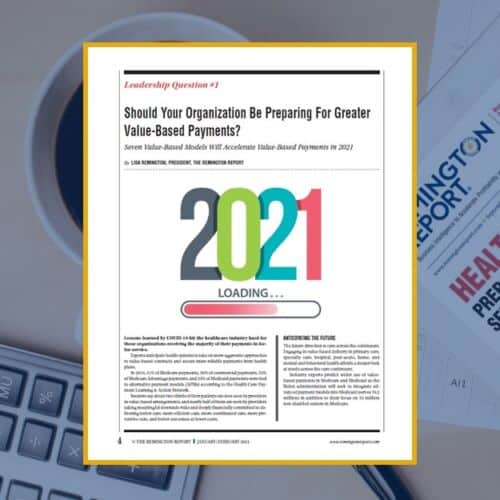 Beginning in 2021, several value-based payment models will begin the shift from fee-for-service to value-based. Earmark this as the transformation of payment reform for care at home providers and how they will be paid in the future. This article is free to 1-Year Classic and 2-Year Premium subscribers.
Beginning in 2021, several value-based payment models will begin the shift from fee-for-service to value-based. Earmark this as the transformation of payment reform for care at home providers and how they will be paid in the future. This article is free to 1-Year Classic and 2-Year Premium subscribers. -
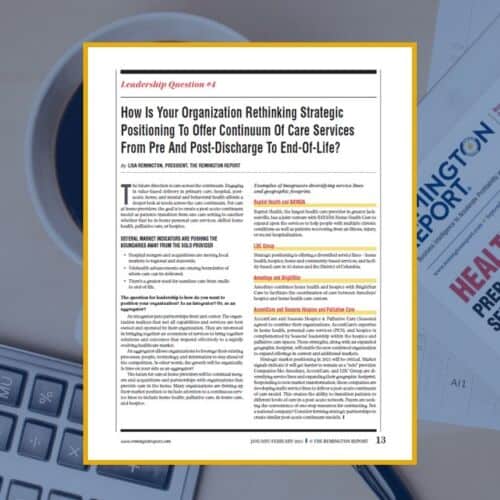 The question for leadership is how do you want to position your organization? As an integrator? Or as an aggregator? For care at home providers, the goal is to create a post-acute continuum model as patients transition from one care setting to another whether that be in-home personal care services, skilled home health, palliative care, or hospice. This article is free to 1-Year Classic and 2-Year Premium subscribers.
The question for leadership is how do you want to position your organization? As an integrator? Or as an aggregator? For care at home providers, the goal is to create a post-acute continuum model as patients transition from one care setting to another whether that be in-home personal care services, skilled home health, palliative care, or hospice. This article is free to 1-Year Classic and 2-Year Premium subscribers. -
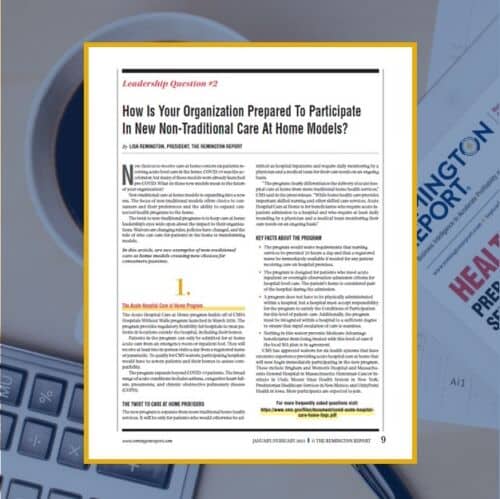 New choices to receive care at home centers on patients receiving acute level care in the home. Non-traditional care at home models is expanding into a new era. The twist to non-traditional programs is to keep care at home leadership?s eyes wide open about the impact to their organizations. Waivers are changing rules, policies have changed, and the role of who can care for patients in the home is transforming models. This article is free to 1-Year Classic and 2-Year Premium subscribers.
New choices to receive care at home centers on patients receiving acute level care in the home. Non-traditional care at home models is expanding into a new era. The twist to non-traditional programs is to keep care at home leadership?s eyes wide open about the impact to their organizations. Waivers are changing rules, policies have changed, and the role of who can care for patients in the home is transforming models. This article is free to 1-Year Classic and 2-Year Premium subscribers. -
 The invisible technology boundaries expand the rules of who can offer care in the home, how they will be paid, and it creates a less restrictive policy environment to deliver care at home. The opportunity to reshape care delivery and create a more efficient and cost-effective healthcare system is achievable because of the acceleration and adoption of technology. This article is free to 1-Year Classic and 2-Year Premium subscribers.
The invisible technology boundaries expand the rules of who can offer care in the home, how they will be paid, and it creates a less restrictive policy environment to deliver care at home. The opportunity to reshape care delivery and create a more efficient and cost-effective healthcare system is achievable because of the acceleration and adoption of technology. This article is free to 1-Year Classic and 2-Year Premium subscribers. -
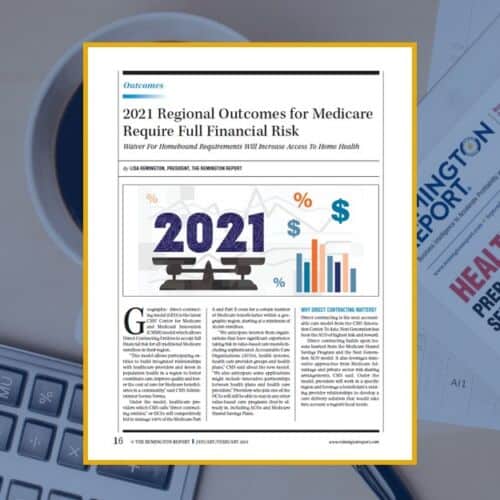 Geographic direct-contracting model (GEO) is the latest CMS Center for Medicare and Medicaid Innovation (CMMI) model which allows Direct Contracting Entities to accept full financial risk for all traditional Medicare enrollees in their region. Three options enhance Medicare benefits and provide waivers for care in the home. This article is free to 1-Year Classic and 2-Year Premium subscribers.
Geographic direct-contracting model (GEO) is the latest CMS Center for Medicare and Medicaid Innovation (CMMI) model which allows Direct Contracting Entities to accept full financial risk for all traditional Medicare enrollees in their region. Three options enhance Medicare benefits and provide waivers for care in the home. This article is free to 1-Year Classic and 2-Year Premium subscribers. -
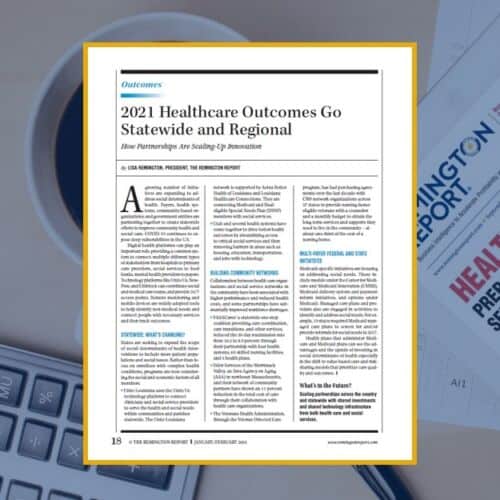 A growing number of initiatives are expanding to address social determinants of health. Payers, health systems, community-based organizations, and government entities are partnering together to create statewide efforts to improve community health and social care. This article is free to 1-Year Classic and 2-Year Premium subscribers.
A growing number of initiatives are expanding to address social determinants of health. Payers, health systems, community-based organizations, and government entities are partnering together to create statewide efforts to improve community health and social care. This article is free to 1-Year Classic and 2-Year Premium subscribers. -
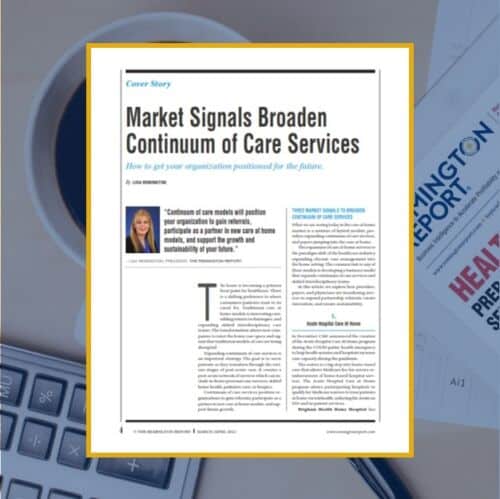 Expanding continuum of care services is an important strategy for future market positioning. We explore how providers, payers, and physicians are broadening services to expand partnership referrals, create innovation, and ensure sustainability. This article is free to 1-Year Classic and 2-Year Premium subscribers.
Expanding continuum of care services is an important strategy for future market positioning. We explore how providers, payers, and physicians are broadening services to expand partnership referrals, create innovation, and ensure sustainability. This article is free to 1-Year Classic and 2-Year Premium subscribers.
